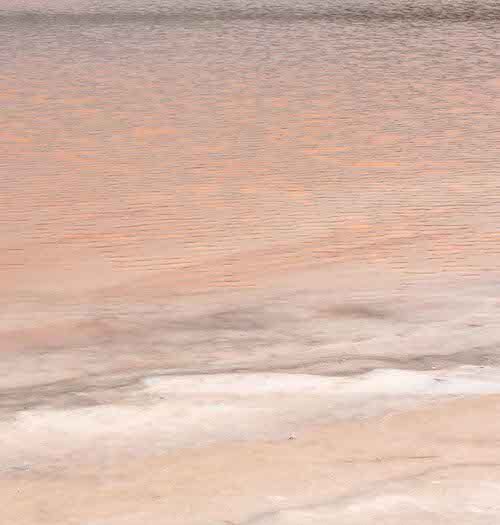Most tourists pass the salt mountain of Kalloni when they are going to Molyvos. With a bit of luck, it’s still looking like a snowy Swiss alp, shining brightly under a clear blue sky; fewer tourists will know the white mountains of Skala Polichnitos, also on the Gulf of Kalloni. Both soggy salt pans are an excellent example of how industry and nature can happily live next to each other. They are very popular with bird watchers, because the salty water attracts flocks of water birds.
It appears that only the company Hellenic Saltworks has the rights to harvest salt in Greece. It is active in eight places in the country, two of them on Lesvos. Messolonghi (West-Greece) produces yearly most of the salt (120,000 ton); Kalloni (Lesvos) is second with about 40,000 ton and Skala Polichnitos (Lesvos) produces a modest 10,000 tons of salt. Germany and Canada are the biggest clients for Greek salt. In 2019 the export of salt was good for about 3.5 millions of euros.
Yesterday I passed through Skala Polichnitos. The salt pans looked deserted. There was little to no water in the salt pans. Only some flamingos, a lonely stork and some other water birds were parading around. It looked like everything and everybody had deserted the place, until I saw a yellow machine scraping along the lower ground of a salt pan. I sighed deeply: what will Lesvos be without its salt pans? I take it that now everything is being made ready for the next harvest, even though there lies an enormous mountain of salt, that could provide every European with a full salt shaker: ‘Greetings from Lesvos’. But salt is not only used in the kitchen. Most of it is sold as road salt. America alone needs some 18 million of tons of salt to keep their roads open when winter strikes.
Now that the sweet scent of the almond blossom is in the streets and fields and the carnival has coaxed people to come out of their houses, summer seems to be near and winter forgotten, even though he still can appear, because we are only at the end of February. Lent is nearly here and then it is only six weeks before Easter eggs will be painted, so the kitchens are busy with people cooking, shaking their pots with salt. Clean Monday will be the last day that people go out for an extensive dinner, even if that consists of only shell fish and vegetables; all products of animals with red blood are forbidden.
I wonder how many households have more than one kind of salt. In my kitchen cupboard there is ordinary salt, coarse sea salt, pink Himalaya salt and Kostrama: black salt from Russia. That is traditionally made on Holy Thursday, the Thursday before Easter, to provide easter eggs and other traditional dishes with a special aroma. Black Russian salt, just like the Indian black salt Kala Namak, is made by burning salt with spices and vegetables (In Russia also with some alcohol) in a special oven. This way the salt gets the colour of charcoal and becomes more rich with minerals.
Greeks do it more simply: they just put salt and spices together in a little pot: for instance with oregano, thyme or basil – or black garlic. That is made ‘old’ by slow burning for weeks at low temperature and a high moisture in an oven, making the cloves black and with special taste (but without colouring the salt black).
Other coloured salt does not need any processing, like ice-mountain-blue salt from Semman in Iran, or brick red Alaea salt from Hawaii. The pink salt from the Himalayas in Pakistan is also famous. It is said that Bucephalus, the horse of Alexander the Great, discovered it. One day, tired but satisfied after another victory Alexander was wandering through the Himalayas, his horse licked a stone that tasted refreshingly salty. Now big pink blocks of salt are mined from the mountains and you can even find this salt in Greek supermarkets (as if Greece does not have its own salt).
You can harvest your own salt from seawater, you can mix salt with your favourite spices, you can collect different kinds of salt and sort them by colour in your kitchen cupboards. But scientists say that the influence of the small amounts of minerals in the salt is so little that it doesn’t matter what kind of salt you use, there is no difference to the taste or to its healthiness. I do not have to think anymore about if I am going to take the exciting looking black salt or the fancy pink salt. When I use the local salt, fresh from the white mountains in Kalloni or Skala Polichnitos, the omelet will just taste the same as with any other kind of salt.











